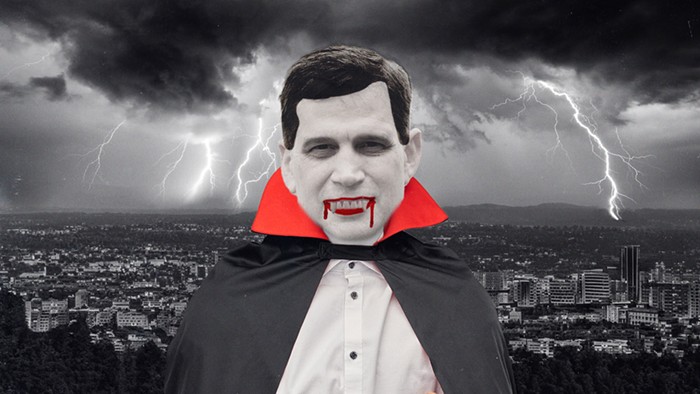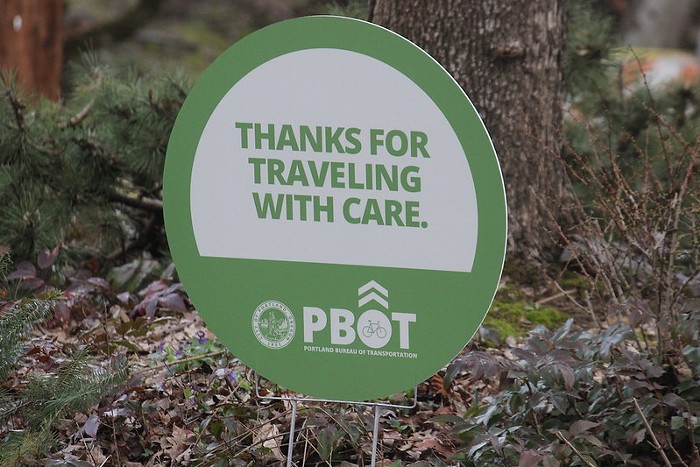In the spoof horror movie Shaun of the Dead (2004), the main characters pretend to be zombies in order to avoid attracting attention from roving groups of undead. Their ruse is quickly uncovered, but what if they had kept up the act long-term?
Morgan Talty’s debut book, Night of the Living Rez—published this past July by Tin House—is a collection of twelve short stories that form a loosely woven narrative around a Penobscot family living on a reservation in rural Maine and their struggles metaphorically to come back to life, as they dig out from generational and personal trauma.
Told from the perspective of a boy named David and a man named Dee, Night of the Living Rez brings a haunted quality and a dry sense of humor to otherwise mundane and sometimes sad scenarios, and creates a world far more expansive and mysterious than it seems on the surface.
The Mercury spoke with Morgan, who was on his way back from the reservation where he grew up and where the book is set, about the resilience of short stories, the role of time in his writing, and the reaction to his work from his tribal community.
MERCURY: This is your debut book, congrats! How did you begin writing these stories, and how did they come together into this collection?
MORGAN TALTY: I wrote the title story to this collection in 2015. It was the first fiction piece I ever wrote where I was completely lost in it, and I had never experienced that before.
At that point, I understood fiction in a way that I couldn’t quite articulate and maybe still can’t. In 2017, when I was in my MFA program at Stonecoast, I wrote a first draft of a collection that was all through the point of view of the David character, there was no Dee or Fellis. The book was really bad. So I shelved it and wrote a story called “Burn,” where I met Dee.
At first I was convinced that it was not David, that it was a different person, but I was used to writing as David, so I just put the letter “D” in as a placeholder. Eventually I was like, “No this is David, but all grown up.” I started these Dee and Fellis stories, and the book guided me toward what it became.
The title of the collection obviously refers to the classic zombie movie Night of the Living Dead. Do you have a special connection to that film?
Never heard of that movie before. [Talty laughs.] Originally, I titled it Night of the Living Rez because the original draft ended with David coming home, and when he goes inside he sees Paige sitting on the couch and she looks like one of the zombies on the television screen. And I just never changed it. The more I revised the story, the more I felt like it opened up strange contradictions around meaning and what we understand these characters to represent. Like, are they zombies? I don’t know. And that’s why I liked it, because I could never really answer the question.
Zombies are also a resurrection of the past, which seems to connect with the book’s themes of things getting passed down and resurfacing. There are also a lot of almost gory visuals scattered throughout the stories: the jar of teeth, the rotting caterpillars. There’s a kind of a haunted element.
There was a synopsis that didn’t get put on the back jacket that read: How do the living come back to life? And I feel like that’s a lot of what this book is about. How do Dee and his family resurrect themselves? How do they rise up out of the ground and not be zombies, but be actual people?
In the story “In a Field of Stray Caterpillars,” the image of the hospital is used as a metaphor for circular or interwoven timelines. How do you think about the function of time in your writing?
I’ve always been very careful with time. I love works where I don’t really know what time they’re set in because, if you don’t draw attention to it, it kind of helps the work persist outside of its own context. There are moments in the book with specific time markers, like in “Blessing Tobacco,” where David is watching the news about a satellite launch, but I tried to avoid it as much as I could.
Night of the Living Rez is billed as a short story collection, but there are so many connections between the stories that I felt like it could easily have been called a novel. Is there a reason you chose the former?
Novels get their power from their sheer immensity and the histories that are brought to the page. Short stories, in contrast, get their power from what’s left out. If you dissect the whole book, take all the stories and put them in [chronological] order, you’ll realize there is a gap of time that’s missing. I was able to glimpse this question that was underground, which is “Well, what happened to this family?” That’s kind of the big, novel-esque question. So I played with that.
I tried to look for subtle moments to suggest the stories belong together. In “Safe Harbor” Dee mangles his leg, and we never really hear about that again, but in “Earth Speak,” when Fellis asks him to drive, he’s like “I hate driving.” Raymond Carver is really good at that, a character will leave his house and say “I looked at the clock, and went out the door,” but he never says what time it is. I suppose it’s an element of withholding, not from the plot, but from the world that the reader is grounded in.
How is it to write something set in such a small rural community, a place where you grew up and probably know most of the people?
I don’t live on the reservation anymore, but I still go back all the time—I just came from there. But it’s been really overwhelmingly positive. My aunt is the tribal clerk, and for two weeks straight, people kept going into her office, not like needing anything, but just to be like “So, who is who in the book?”
People were really happy and proud of it because it’s the first time Penobscot people have been talked about in a larger mainstream setting. Gregory Brown is a Maine author who wrote the Lowering Days (2021), which featured Penobscot characters and language, but he’s not native, you know? This is the first time a Penobscot person has written about Penobscot people for a larger audience. And I think the tribe is just very happy about that.
What’s next for you? Any projects you are excited about?
I really want to write a zombie/post-apocalyptic book set 200 years in the future, about these Penobscot people who have survived and are still on the island. That’s the thing I’m really excited to start writing when I get freed up.
Morgan Talty appears in conversation with Chelsea Bieker, moderated by John Freeman, at the Portland Book Festival, Nov 5, 2 pm, Portland Art Museum, Miller Gallery, 1119 SW Park, festival general admission, tickets here, $15-25 with a lot of add-ons; high school students and people 17 & under get in free.
















